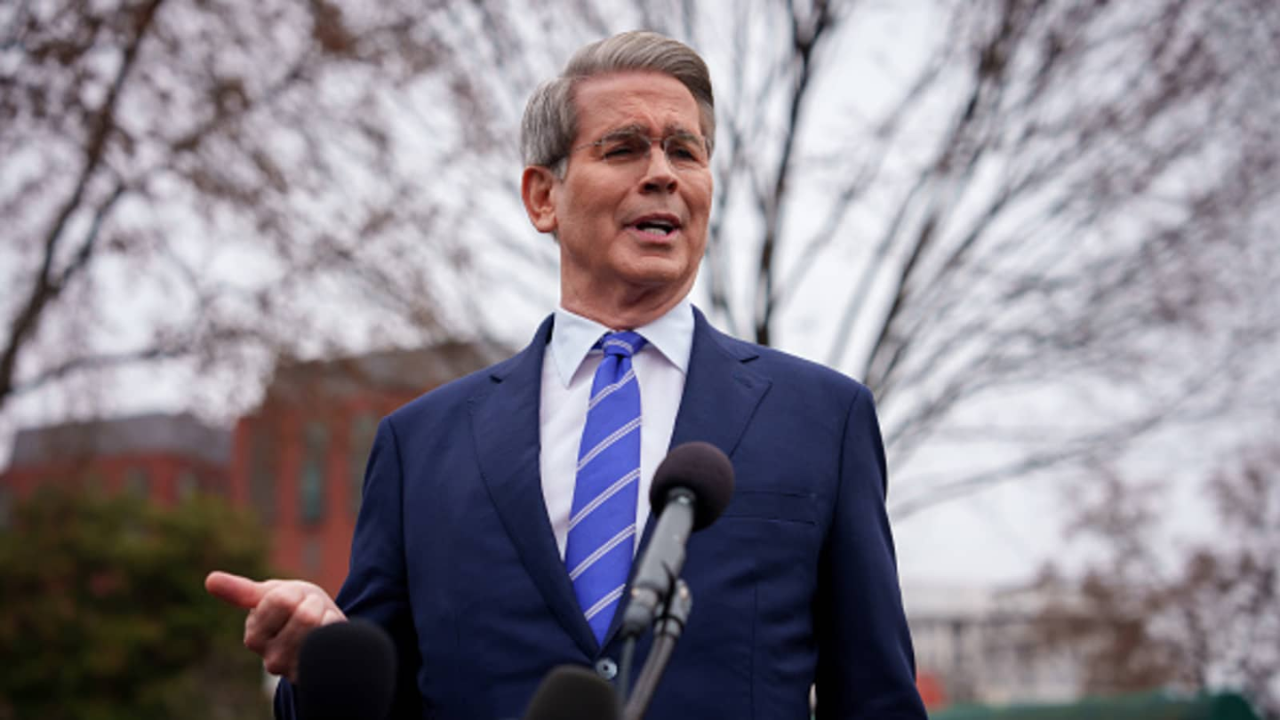U.S. equity markets lost around $1.5 trillion after President Trump announced sweeping import tariffs, but his administration is more focused on lowering borrowing costs to avoid a potential sovereign debt crisis.
When Trump unveiled a spreadsheet detailing the new tariffs late Wednesday, investors quickly exited the market.
Futures contracts for the S&P 500 and Nasdaq 100 tumbled after learning that the U.S. would impose an additional 34% duty on Chinese goods, 20% on European Union imports, and 24% on Japanese products starting next week.
Former Harvard economist Lawrence Summers estimated that about $1.5 trillion in market value was erased within an hour.
Despite the clear link between the selloff and the announcement, administration officials downplayed the impact. Instead, they blamed the drop on DeepSeek, an open-source AI model from China that had already shaken tech valuations in January.
“The Nasdaq peaked on DeepSeek day,” Treasury Secretary Scott Bessent told Bloomberg TV on Wednesday. “So this is a MAG-7 problem, not a MAGA problem.”
However, Saxo Bank’s global head of investment strategy disagreed, pointing to bearish sentiment across major stocks like Amazon and Nike, driven by a historic tariff increase that raised the average effective import duty by nearly 19 percentage points.
“President Trump called April 2nd ‘Liberation Day’ for the American economy,” wrote Jacob Falkenheuer on Thursday. “It marked the broadest and most aggressive tariffs imposed by the U.S. in over a century, and global markets reacted sharply.”
The Debt Refinancing Challenge
Bessent’s response may not just be about avoiding questions on the stock market slump. The White House has another concern—managing the country’s growing debt.
Rather than focusing on equity markets, Bessent wants the health of the U.S. economy to be judged by the benchmark 10-year Treasury bond, which influences broader credit markets, including home mortgages and auto loans.
A lower yield makes borrowing cheaper for both Americans and the federal government.
He also inherited a debt crisis from the Biden administration. Critics, including Wall Street veteran Stanley Druckenmiller, have called Biden’s debt strategy shortsighted, as much of the national debt was refinanced with short-term Treasury bills.
Now, a massive wave of debt must be refinanced this year without causing financial instability.
Avoiding a U.S. Debt Crisis
Interest payments on the national debt reached $1 trillion last year, surpassing defense spending. If borrowing costs rise further, the U.S. could be trapped in a vicious cycle—borrowing more at higher interest rates just to service its debt.
Trump and Bessent have made it clear they want to prevent this scenario by lowering long-term borrowing costs, an area beyond the Federal Reserve’s direct control. While this strategy may hurt stocks in the short term, they believe the alternative is far worse.
Billionaire investor Ray Dalio has warned that policymakers have at most three years to address the debt problem before investors start rejecting U.S. bonds.
So far, Bessent’s plan seems to be working. Fearing the economic impact of Trump’s tariffs, markets have begun pricing in the risk of a recession.
Investors have rushed to buy U.S. debt, pushing the 10-year Treasury yield from 4.80% to 4.08% in less than three months.
Disclaimer- Our team has thoroughly fact-checked this article to ensure its accuracy and maintain its credibility. We are committed to providing honest and reliable content for our readers.






